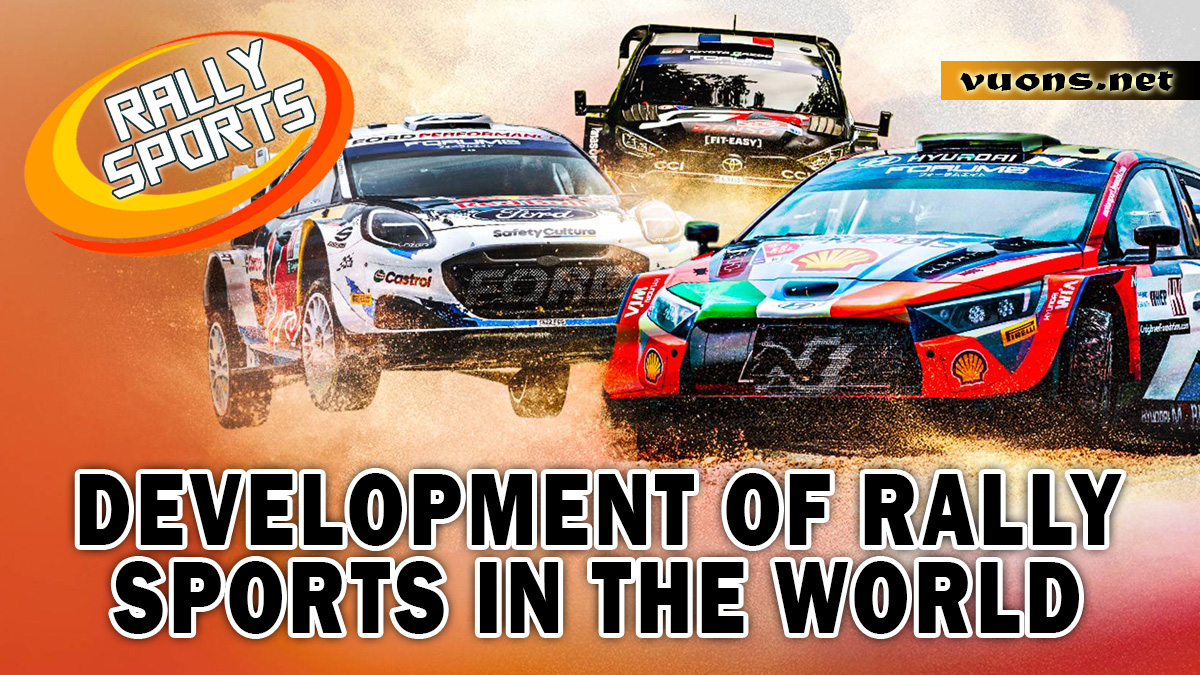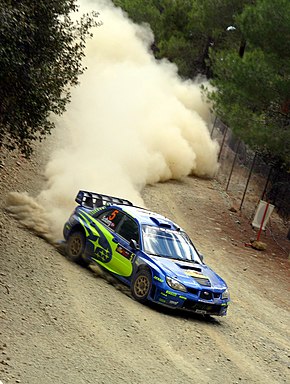History and Development of Rally Sports in the World
The Beginnings of Rallying: From Street Racing to International Competition
The Sport of rallying has a long history that dates back to unofficial street races in Europe in the early 20th century. Originally, rallies were spontaneous activities in which drivers tried to reach a specific destination as quickly as possible, often over difficult terrain. This activity attracted attention because of the combination of driving and navigation skills required to conquer the poorly mapped roads of the time.
Over time, rallying developed into a more organized event, with the first race that was considered official being the Monte Carlo Rally which began in 1911. This event became famous because it challenged participants to compete in a variety of weather conditions and tough terrain, starting from roads paved to snowy paths in the mountains. The popularity of the Monte Carlo Rally led to the emergence of other rally races across Europe, with participants from various countries looking to test their skills.
In the 1950s and 1960s, rallying began to develop rapidly as a more structured sport with stricter rules and clearer vehicle categories. The Federation Internationale de l’Automobile (FIA) played an important role in standardizing the rules and oversight of rally competitions, allowing the sport to grow into a global phenomenon. In 1973, the World Rally Championship (WRC) was launched as an official international racing series, introducing rallying to a wider audience around the world.
Since then, the rally has continued to develop, with increasingly sophisticated technology and vehicles and more challenging routes. From a simple street race, rallying has become one of the most challenging and respected automotive sports in the world, with drivers having to rely not only on speed but also strategy and physical and mental endurance to reach the finish line.
Evolution of Regulations and Car Categories in Rally
As its popularity continues to grow, rallying has undergone many changes in terms of regulations and car categories. In the beginning, the rules in rally sports were quite simple, with the main focus on the participant’s ability to complete the course in the fastest time. The cars used vary greatly, from modified daily vehicles to special racing cars. However, as the number of participants and route complexity increases, the need for standardization becomes increasingly apparent.
In the 1970s, the Fédération Internationale de l’Automobile (FIA) began to take a more active role in governing the sport. They introduced several categories of cars, known as “groups,” to make it easier to enforce the rules and ensure fair competition. This group covers a wide range of technical specifications, from engines and chassis to suspension and brake systems, all of which are designed to create a balance between car performance and driver safety.
Over time, regulations in rallying became increasingly strict, especially after several fatal accidents occurred in the 1980s. The FIA responded by introducing stricter safety rules, such as stronger roll cages, the use of standardized fuel and other safety devices. They also limited the modifications permitted to vehicles, encouraging the use of mass-produced cars that had been modified for racing, known as the “Group A” and “Group N” categories.
In the modern era, categories in rallying continue to evolve, reflecting technological advances and demands for more exciting and safer competition. The main categories currently are World Rally Car (WRC), which allows more significant modifications to improve performance, and Rally2, which offers a more affordable platform for teams and drivers. These changes have helped keep rallying relevant and challenging, while ensuring safety and competitive balance in the sport.
The emergence of the World Rally Championship (WRC) and its impact
The World Rally Championship (WRC) emerged in 1973 in response to the increasing popularity and professionalism of rally racing throughout the world. Organized by the Fédération Internationale de l’Automobile (FIA), the WRC is an international competition event that combines racing on various terrains, from paved roads to gravel and snow tracks. The championship is a major platform for racers and car manufacturers to demonstrate their skills and technology in the most extreme conditions.
The impact of the emergence of the WRC is very significant in the world of motorsport. First, the WRC takes rallying to a higher level by presenting a more organized and globally recognized competition. These championships help raise safety, technical and regulatory standards, all of which contribute to the evolution of the sport. Drivers are required to have special licenses, and competing cars must meet strict technical specifications.
Second, the WRC has influenced the development of automotive technology. In an effort to beat the competition, car manufacturers such as Subaru, Mitsubishi, Toyota, Ford, and Hyundai have developed various innovations in vehicle technology, including four-wheel drive systems, advanced suspensions, and more efficient and powerful engines. These innovations are often then applied to cars produced for the public, providing direct benefits to consumers.
Additionally, the WRC also had a major impact on the visibility and popularity of rallying as a sport. This championship attracts the attention of fans from all over the world, both watching directly at the racing location and through media coverage. This growing popularity has helped attract sponsorship and investment, which is important for the sustainability and growth of the sport of rallying.
Overall, the emergence of the WRC has helped advance the sport of rallying in unexpected ways, making it one of the most challenging and exciting competitions in motorsport.
Legendary Figures and Teams in the History of Rally Sports
The history of rallying is filled with legendary figures and teams that have left a deep mark on the world of racing. One of the most famous names is Colin McRae, a racer from Scotland who became the youngest world champion in the World Rally Championship (WRC) in 1995. Known for his aggressive driving style and courage on the race track, McRae has become an icon in the world of rallying, even after his death in 2007.
Apart from McRae, there is Sébastien Loeb, a racer from France who is considered one of the best of all time. Loeb dominated the WRC by winning nine consecutive world titles from 2004 to 2012, a record that has yet to be broken. His skill in reading the track and his consistency in various racing conditions make him a legend that is difficult to match.
On the team side, Lancia is one of the most successful and legendary teams in rally history. With cars such as the Lancia Stratos and Lancia Delta Integrale, the team dominated rallying in the 1970s and 1980s, winning many world championships. The technology and innovations they brought, such as the use of four-wheel drive, became standards in the sport.
Another team that left a deep legacy is Audi with their legendary car, the Audi Quattro. Introduced in the early 1980s, the Audi Quattro was the first car to effectively introduce four-wheel drive technology in rallying, changing the course of racing car development forever. With this technology, Audi won numerous championships and proved the importance of innovation in sports.
Names such as Tommi Mäkinen from Finland and Carlos Sainz from Spain are also important figures in the history of rallying. They not only win championships but also contribute to the development of the sport through their skills and dedication.




